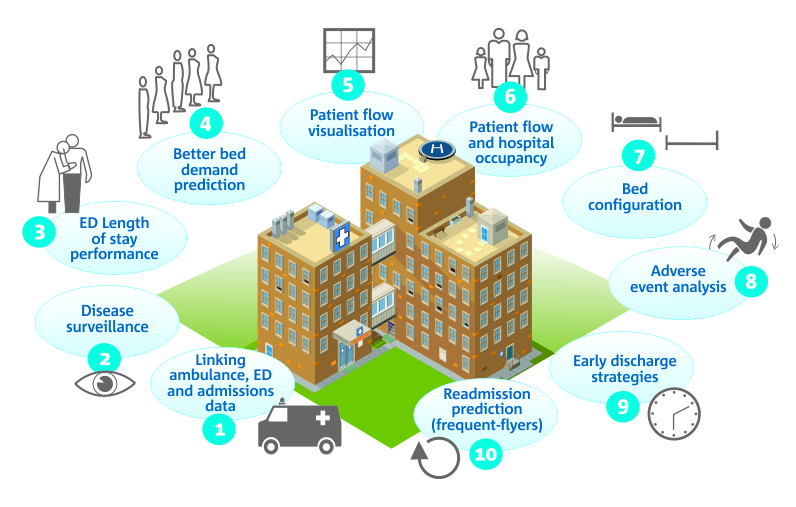Have you ever sat in a hospital emergency department? Imagine a busy waiting area filled with people waiting to be treated, sick children and the elderly, broken bones and patients wheeled in on ambulance trolleys needing urgent surgery. How do we make sure that everyone can be seen and treated within four hours and that there is a hospital bed ready and waiting for those that need it?
For the majority of Australian patients visiting a public hospital, the average waiting time in an emergency department is around 8 hours and 28 minutes but in some cases can be as high as 15 hrs or more. [1]

Our health services team is helping hospitals understand how they can cut emergency waiting times to meet national targets of four hours.
As our population is ages, becomes chronically ill and the cost of healthcare approaches 40c in our Australian tax dollar over the next 30 years, we are faced with the urgent challenge of improving the efficiency and delivery of our healthcare services.
Overcrowding in hospitals is one of the biggest challenges facing our healthcare system and has been labelled an ‘international crisis’ [2], which can have a significant impact on the quality of patient care and experience.
To address this issue, National Emergency Access Targets (NEAT for short) introduced by the Federal Government in 2011, will require public hospitals to ensure that 90% of all patients arriving at emergency departments are seen and either admitted, discharged or transferred within four hours by 2015.
This week is Australian Healthcare Week and Dr Sarah Dods, Research Leader for Health Services in our Digital Productivity and Services Flagship, is launching a whitepaper called ‘Evidence based strategies for meeting hospital emergency targets’ at the Healthcare Efficiency Through Technology conference in Sydney.
Dr Dods will be discussing how our patient flow modelling tools can help hospitals understand what they can do to cut emergency waiting times to meet these new emergency targets and improve hospital efficiency.
This could include; analysis of bed configuration, patient flow, the effect of overcrowding, predicting which patients might be readmitted and when there may be an influx of patients due to a strong flu season, for example. All of these areas of analysis can provide a whole-of-system approach to hospital operations to help hospitals meet emergency targets.

We are investigating many areas of analysis to help improve the way patients flow through the hospital system.
One example of this that is already assisting hospitals is our Patient Admission Prediction Tool (PAPT), where we have been working to reduce hospital waiting times and identify bottlenecks in Queensland hospitals by predicting how many patients will turn up in emergency departments and when.

Our patient flow tools are being used in QLD hospitals to predict how many patients will turn up at emergency and when
Our patient flow tools are being used in QLD hospitals to predict how many patients will turn up at emergency and when.
Contrary to the belief that emergency patient volumes are unpredictable, the number of admissions per day can be predicted with remarkable accuracy. PAPT uses historical data to provide an accurate prediction of not only the expected patient load but their medical urgency and specialty, and how many will be admitted and discharged.
The system allows hospital management to accurately forecast service demands for inpatient and emergency department beds well in advance, enabling hospitals to manage beds and schedule elective surgeries for quieter times. The software also allows on-the-ground staff to see how many patients are likely to arrive in the hour, the rest of the day, into next week or even holidays with varying dates such as Easter.
Check out PAPT in action in this story on Channel Ten news.
Transcript available here
To find out more read the new whitepaper Evidence driven strategies for meeting hospital performance targets.

